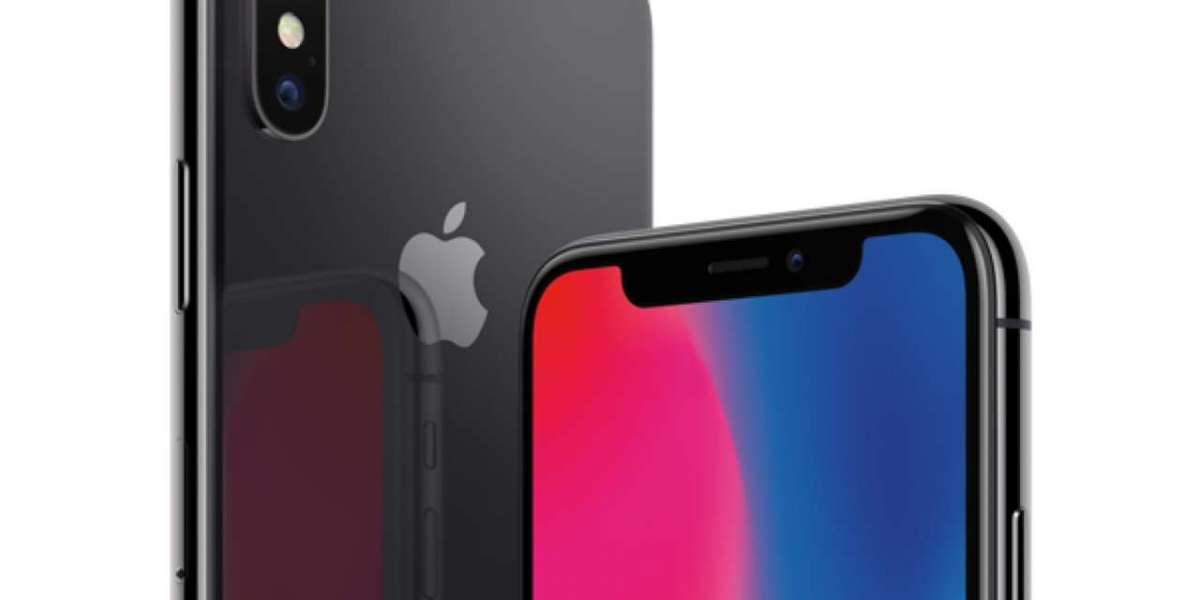In the rapidly evolving world of smartphones, few devices have left as indelible a mark as the iPhone X. Unveiled by Apple in September 2017, the iPhone X was a revolutionary step forward in design and technology, commemorating the tenth anniversary of the original iPhone. With its introduction, Apple set a new standard for what a smartphone could be, focusing on cutting-edge features, a stunning design, and a reimagined user experience. This article delves into the key aspects that made the iPhone X a game-changer in the industry and how it paved the way for future innovations.
A Bold New Design
One of the most striking aspects of the iPhone X was its design. Departing from the traditional iPhone aesthetic, Apple introduced a nearly bezel-less display, eliminating the familiar Home button in favor of a sleek and seamless front. The 5.8-inch Super Retina OLED display was a first for Apple, offering vibrant colors, deep blacks, and a high contrast ratio that made images and videos come to life.
The removal of the Home button also allowed Apple to maximize the screen-to-body ratio, providing users with a larger display without significantly increasing the device's size. This design shift required the development of new gestures for navigation, such as swiping up from the bottom to return to the home screen and swiping down from the top right for the Control Center.
The iPhone X's build quality was another standout feature. The device was constructed with surgical-grade stainless steel and durable glass, giving it a premium feel and making it more resistant to water and dust. The glass back also enabled wireless charging, a feature that was gaining popularity in the smartphone market.
Face ID: A New Era of Security
With the removal of the Home button came the need for a new method of biometric authentication. Apple introduced Face ID, a facial recognition system that replaced Touch ID. Utilizing the TrueDepth camera system housed in the notch at the top of the display, Face ID projected and analyzed over 30,000 invisible dots to create a precise depth map of the user's face.
Face ID was not only more secure than its predecessor but also more convenient. It allowed users to unlock their phones, authenticate payments, and access secure apps simply by looking at their device. The system adapted to changes in appearance, such as facial hair or glasses, and worked in various lighting conditions, including in the dark.
The introduction of Face ID also had implications for privacy and security. Apple emphasized that all facial recognition data was stored securely on the device and not shared with third parties, addressing concerns about user privacy.
Performance and Hardware
Under the hood, the iPhone X was powered by Apple's A11 Bionic chip, a six-core processor that delivered industry-leading performance and efficiency. The A11 chip featured two high-performance cores that were 25% faster than the previous generation and four high-efficiency cores that were 70% faster. This made the iPhone X capable of handling demanding tasks with ease, from gaming to augmented reality applications.
The device also came with 3GB of RAM and storage options of 64GB or 256GB, providing ample space for apps, photos, and media. The iPhone X's battery life was comparable to that of the iPhone 8 Plus, despite its smaller form factor, thanks to the efficiency improvements made possible by the A11 chip.
Advancements in Photography
Apple has long been known for its commitment to photography, and the iPhone X was no exception. The device featured a dual-camera system with 12-megapixel wide and telephoto lenses, both equipped with optical image stabilization. This allowed for clearer, sharper images, especially in low-light conditions.
The iPhone X also introduced Portrait Lighting, a feature that used advanced algorithms to create professional-looking lighting effects in portrait photos. Users could choose from various lighting modes, such as Studio Light and Stage Light, to enhance their images.
The TrueDepth camera on the front of the device also enabled a new feature called Animoji, which used facial tracking to animate emoji based on the user's expressions. This playful addition quickly became a hit with users and showcased the capabilities of the TrueDepth system.
The Impact on the Smartphone Industry
The release of the iPhone X marked a turning point in the smartphone industry. Its design and features set a new benchmark that competitors sought to emulate, leading to a wave of smartphones with similar bezel-less displays and advanced facial recognition systems.
The introduction of the notch, initially met with mixed reactions, became a defining design element for many subsequent smartphones. While some manufacturers opted for alternative solutions, such as hole-punch displays or pop-up cameras, the influence of the iPhone X's design was undeniable.
Moreover, the iPhone X demonstrated the potential of facial recognition technology, pushing other companies to develop their own versions of the technology. This shift toward biometric authentication has since become a standard feature in many modern smartphones.
Legacy and Evolution
The iPhone X's influence is still felt in the smartphone market today. Its introduction paved the way for future iPhones, including the iPhone XS, XR, and 11 series, which built upon the foundations laid by the iPhone X. The design and technology innovations introduced with the iPhone X continue to be refined and expanded in subsequent models.
In addition to its impact on hardware and design, the iPhone X also influenced software development. The introduction of new gestures and Face ID required developers to rethink app interfaces and functionality, leading to more intuitive and seamless user experiences.
Conclusion
The iPhone X was more than just a smartphone; it was a bold statement of Apple's vision for the future of mobile technology. By embracing innovation and pushing the boundaries of what a smartphone could be, Apple set a new standard that continues to shape the industry today. The iPhone X's legacy is a testament to the power of design and technology to transform the way we interact with the world around us. As we look back on its introduction, it's clear that the iPhone X was a pivotal moment in the history of smartphones, leaving an enduring legacy that will be felt for years to come.








